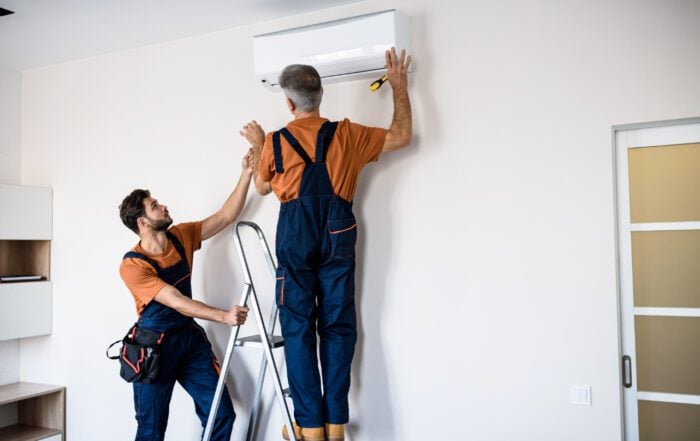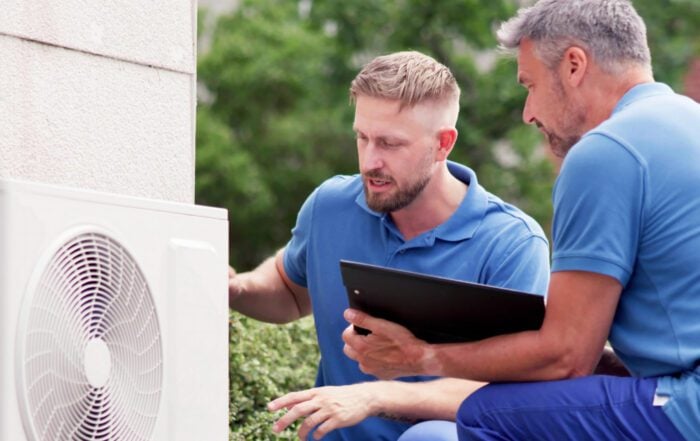It’s almost spring cleaning time. Traditionally, the start of the spring season has been considered THE time to deep clean your home. As you start clearing out your closets, shampooing the carpets, and emptying your cabinets, don’t forget to take care of your HVAC equipment – spring maintenance is important to make sure your system is at its best for the months ahead. If your system is ready for spring, you’ll reap the benefits of greater energy efficiency and better home comfort. You’ll also have the security of knowing your system has the best chance of making it through the summer without experiencing a breakdown. Here are some steps that we recommend you take to prepare your HVAC system for the warmer temperatures.
Replace Your Filters
The first step in spring maintenance for your HVAC system is to replace your furnace and air conditioning filters. Dirty filters affect the air conditioning system’s efficiency and performance, which means a reduced level of comfort and higher energy bills for you. For most of us, checking the filter means inspecting the furnace filter (which is also the A/C filter). If it looks dirty change it. Then make sure you continue to check the filter each month.
During periods of heavy usage like in the summer, ensure you clean or replace your filters every month.
Turn Your A/C Unit On
Give your air conditioning unit a test run by turning it on and running it momentarily. If you notice any problems, have a certified HVAC professional inspect them.
Check Your Smoke and CO Detectors
Although you will typically run your furnace less during the spring, smoke and carbon monoxide can sneak into your home from other sources, such as gas appliances. Start by replacing the old batteries in your smoke and carbon monoxide detectors. Vacuum the outside of the detectors as well to ensure they are performing at maximum operation.
Inspect Your Ductwork
A comprehensive spring cleaning routine should also include a duct inspection. Leaky ductwork can considerably lower the energy efficiency of your air conditioner. Check all your ducts and seal any holes or cracks you come across, and make sure all duct sections are properly connected. Insulation should also be added to ducts that run through unconditioned areas.
Clear Obstructions Around the Outdoor Unit
Your system’s outdoor unit contains a very important component, the compressor. Ensure you remove plants, leaves, tree limbs and any other obstructions away from the unit, just like at the end of the season. This allows for better airflow through the condensing coils.
Other Tips and Tricks
Install a programmable thermostat if you don’t already have one. They’ll let you set energy-saving temperature changes to fit your family’s daily and weekly schedule.
Cleaning inside and outside refrigerant coils is an important part of the spring cleaning process as well. Dirty coils can obstruct heat exchange, which is essential for effective cooling. You should also have a technician check the condensate pan and drain since blockages can result in serious water damage on floors, walls, and belongings.
Schedule HVAC Maintenance
Early spring is an ideal time to schedule some preventive maintenance. While DIY steps are important, a professional maintenance check is recommended for each spring cleaning season. A certified technician will clean and lubricate the HVAC components, check the refrigerant levels, make sure any electrical connections are tight, and adjust airflow, among other tasks. This service ensures that you get your system the necessary repairs and tune-ups to keep it running at its best. And that saves you money on energy bills each month and extends the life of your equipment.
Don’t Neglect Your Air Cleaner When You’re Planning Spring Cleaning
Once the temperatures start to rise, it feels like the perfect time to open the windows and let in that fresh air – especially when you start working up a sweat from all that spring cleaning. However, nature’s ventilation system may not be optimal for allergy sufferers. And for those with an air cleaner, it’s important to ensure your unit is in tip-top shape as allergy season hits its peak.
- As with any electric device, you should always shut off your air cleaner before beginning any type of maintenance.
- Start by removing the cells and the pre-filter – and be careful not to drop the cell plates. A bathtub or another large basin will work nicely to clean the individual parts of the machine. Dissolve a small amount of dishwasher detergent (not laundry detergent) in hot water.
- Only clean one cell at a time so as not to damage or bend any of the plates or wires. Then allow the cells to soak for about 30 minutes. Agitating the cells and pre-filter slightly as they soak will help loosen any dirt and dust that has collected.
- Rinse all the components thoroughly with gentle water pressure after they finish soaking. And take extra care not to damage the ionizing wires. You can wipe these down with a soft cloth. Allow everything to dry before returning the cells and filter to the air cleaner. Once they’re back in place, turn it on. In less than an hour, your unit should be ready to tackle another allergy season.
You should routinely clean the filters and coils on your air purification system at the beginning of each heating and cooling season. Different brands may have their own model specific instructions, so make sure you consult the owner’s manual first.
Maintaining Your Heat Pump: Time for a Spring Cleaning Checkup
Regularly maintaining your heat pump is essential for keeping it performing optimally. With Northeast Ohio’s weather, chances are you’re running it almost all year long. That constant demand makes maintenance particularly important, but it also makes it hard to find the time to have it done.
During the mild spring weather (when you’re neither heating nor cooling – just enjoying the end of snow for a few months) is the perfect time for a system checkup. When you schedule professional maintenance in spring, your system will be ready to keep you cool all summer. When fall comes back around, right before the heating season, it’s another good time for routine maintenance.
But you don’t have to wait for a professional to come onsite to take care of some maintenance. There are a few steps you can perform yourself.
Check the filter
Once a month remove your HVAC air filter and hold it up to the light. If you can’t see light through it, replace it.
Clean the outdoor coils
With a garden hose, gently spray water through the fins of your outdoor unit, working from top to bottom. Remove any stuck-on debris with a soft brush.
Clean your air delivery system
Remove your registers and grilles, and wipe them down to remove any dust buildup (since your home has been sealed up for the winter, you’ll likely have a noticeable collection). You may also want to vacuum the inside of the ducts.
Of course, you won’t be able to handle everything on your own. Correctly maintaining your heat pump requires help from a professional, too. Every spring and/or fall, contact an HVAC technician to perform maintenance jobs such as:
- Checking the refrigerant level — An service technician can ensure your system has the correct refrigerant charge for streamlined operation. Your technician will also inspect the system for any refrigerant leaks.
- Inspecting the components — To improve your heat pump’s efficiency and reduce the risk of future malfunctions, your technician will inspect the electrical terminals, clean and lubricate the motor, and tighten or replace the motor’s fan belt. He/She will also test the thermostat for correct operation and calibration.
- Examining the ductwork — A technician will use diagnostic equipment to test for optimal airflow and identify any air leaks that could reduce your system’s efficiency.
Get ahead of the game and join our HVAC Maintenance Program. Program members receive regularly scheduled maintenance, priority emergency service, reduced fees on diagnostics, and more. Contact Stack Heating & Cooling to learn more and start saving all year long.
Have Any Questions?
If this is an emergency please call 440-937-9134.
Otherwise, please feel free to call us or submit this form to schedule an appointment for service or request an estimate. We will contact you shortly!



